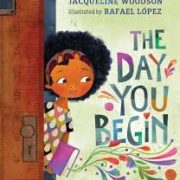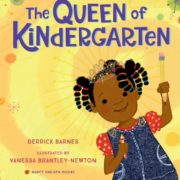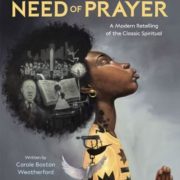BRIDGES by Marc Majewski and GOODNIGHT TO YOUR FANTASTIC ELASTIC BRAIN by JoAnn and Terrence Deak
At the start of the COVID lockdown, my then-four year old spent every day either jumping on his trampoline or measuring things. He wanted to know how long the biggest animals were and to measure them in our yard.
We measured the length of a gray whale (90 feet or three school buses). We are lucky to have very nice neighbors because we had to start in their yard and walk back and forth with the tape measure from their lawn to our back fence. He is now eight, but he’s still just as curious about the biggest of the big, the smallest of the small, and everything in between.
One of my most recent favorite nonfiction titles that fits the bill is Marc Majewski’s Bridges. Folks, the title does not disappoint. This book has a lot of bridges in it. What’s more, each bridge shown in the book is contrasted with another bridge with opposing features. The international orange color of the Golden Gate Bridge “stands out” while the Umshiang Double-Decker Root Bridge in India “blends in.” Most pages have simple sentences describing what each bridge is or does (“bridges stand firm” and “bridges swing,” for example).
Majewski’s acrylic illustrations are beautiful while maintaining factual accuracy. They are fun and brightly colored enough to catch the casual viewer’s eye while reading, but they are intricate enough to encourage prolonged viewing. I love that Majewski’s book serves two purposes and can be adapted to various ages. Bridges can serve as a beautiful standalone picture book, great for one-one-one or large group readings. It can also be used to learn more about architecture and engineering, as the endpages include the names and brief descriptions of every bridge shown in the book. My son and I read the story along with the descriptions, flipping back and forth between the story and the descriptions to learn more about each bridge as we read. I appreciate the choice to include the details at the end of the book so the text does not obscure the stunning illustrations.
The second title I want to share isn’t quite an exploration of big or small, but it offers accessible insight into how humans work. JoAnn and Terrence Deak’s Goodnight to Your Fantastic Elastic Brain is an excellent primer on the developing brain. JoAnn Deak, PhD, is a preventive psychologist and Terrence Deak is a professor of psychology and behavioral neuroscience. Suffice to say, they know their stuff. Though they are both academics, this elementary nonfiction offering is anything but dry. On the contrary, it’s a fun and engaging read. This is partially due to the cartoon-like illustrations from artist Neely Daggett, but the writing itself is relatable and scaffolded to teach young readers something new based on assumed prior knowledge and lived experiences. The authors promote Goodnight as a “growth mindset” book, and it lives up to that proclamation. I appreciate that it does not rely on platitudes about trying your best (though such sentiments have their place). Instead, it describes the parts of the brain that make you capable of trying again after failing (and the importance of doing so). The book’s primary focus is the role that sleep plays in a developing brain. The authors explain concepts like the prefrontal cortex and how healthy sleep patterns contribute to its ongoing development and help you feel more in control. Daggett’s full-page illustrations perfectly enhance the concepts explained in the book. I would recommend this book as a one-on-one read for an adult and an elementary-aged reader.











